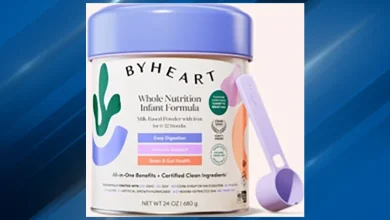Menopause Hormone Therapy FDA Guidelines: What Every Woman Should Know

Menopause is a natural life stage, but its symptoms — hot flashes, night sweats, vaginal dryness, mood changes, sleep problems, and bone loss — can seriously affect quality of life. Menopausal hormone therapy (MHT), also called hormone replacement therapy (HRT), has long been the most effective treatment for many of these symptoms. In November 2025 the U.S. Food and Drug Administration (FDA) updated how it communicates the risks and benefits of these medicines — including removing the decades-old “black box” (boxed) warning from many estrogen-containing products — changing the conversation between women and their clinicians. This article explains the practical implications of those FDA changes and what every woman should know when considering MHT.
Quick summary (what changed and why it matters)
- The FDA has requested labeling changes and has initiated removal of the long-standing boxed warning from many systemic menopausal hormone therapy products, after review of evidence showing that blanket, fear-based language did not reflect nuanced, age- and timing-dependent risks.
- The change is aimed at better communicating individualized benefit–risk decisions, especially for women who start MHT early in the menopausal transition (generally under 60 or within ten years of menopause).
- Important safety information remains; MHT is not risk-free and still requires assessment of personal and family health history.
What is menopausal hormone therapy (MHT)?
MHT replaces the estrogen (and in many cases, progestin or progesterone) that the ovaries stop producing at menopause. There are different preparations and delivery routes:
- Systemic estrogen (pills, patches, gels, sprays) — treats hot flashes, night sweats, and prevents bone loss.
- Estrogen + progestin/progesterone — used when a woman still has a uterus (progestin protects the uterine lining from estrogen-driven overgrowth).
- Local (vaginal) estrogen — low-dose creams, rings, or tablets targeted at vaginal dryness, painful intercourse, and urinary symptoms with minimal systemic absorption.
Choice of type, dose, and route depends on symptoms, medical history, and treatment goals.
Why the FDA changed labels now
The boxed warning that has accompanied many estrogen products since the early 2000s was rooted in results from the Women’s Health Initiative (WHI) trials, which were landmark studies but involved mostly older postmenopausal women and used specific hormone formulations and doses. Subsequent research has shown that risks vary by age at initiation, time since menopause, type and dose of hormone, and route of administration. For many women in early menopause, the absolute cardiovascular and cognitive risks appear much lower than originally feared, while symptom relief and bone protection remain substantial. The FDA’s recent expert review and label updates reflect that evolving evidence and encourage individualized clinician–patient discussions rather than a one-size-fits-all warning.
Who may benefit most from MHT?
MHT is typically considered for women who have moderate-to-severe vasomotor symptoms (hot flashes, night sweats) or genitourinary syndrome of menopause (vaginal dryness, painful sex, urinary symptoms), and for prevention of osteoporosis in certain situations. The greatest benefit-to-risk balance is often seen in:
- Women younger than ~60 years, or who are within 10 years of menopause onset, who have bothersome hot flashes or other menopausal symptoms.
- Women whose symptoms significantly interfere with sleep, mood, or daily function and who prefer an effective, well-studied option.
That said, individual health factors (personal/family history of breast cancer, blood clots, stroke, active liver disease, or unexplained vaginal bleeding) may make hormone therapy unsafe or require different choices.
What are the risks? (Updated, but still important)
Although the FDA has removed the boxed warning for many products, key risks remain and should be part of informed decision-making:
- Blood clots (venous thromboembolism) — systemic estrogen (especially oral forms) can increase blood clot risk. Risk is lower with transdermal (patch) delivery and at lower doses.
- Stroke and heart disease — risk depends strongly on age and timing; risks appear higher in older women starting MHT long after menopause (the so-called “timing hypothesis”). Starting earlier generally has a more favorable profile.
- Breast cancer — combined estrogen-progestin therapy has been associated with a small increase in breast cancer risk with longer-term use; estrogen alone (in women without a uterus) shows a different pattern. Decisions about duration and monitoring are individualized.
- Endometrial (uterine) cancer — if a woman has a uterus, unopposed estrogen increases endometrial cancer risk; adding progestin or using a combined preparation mitigates that.
The FDA’s update emphasizes accurate, nuanced communication: the risk magnitude varies substantially by individual factors, and many women — particularly younger menopausal women — face low absolute risks from appropriately prescribed MHT.
Practical clinical guidance (what your clinician will discuss)
When you and your clinician consider MHT, expect a tailored discussion that covers:
- Symptoms and goals — what bothers you most, and what outcomes do you want (symptom relief, improved sleep, sexual function, bone protection)?
- Risk assessment — personal/family history of breast/ovarian/uterine cancer, thrombotic events, cardiovascular disease, liver disease, and smoking status.
- Type and route selection — for example, low-dose vaginal estrogen for isolated genitourinary symptoms; transdermal estradiol patch to reduce clot risk; combined therapy if you have a uterus.
- Dose and duration — use the lowest effective dose to control symptoms; duration is individualized. Periodic reevaluation (e.g., annual) is common.
- Alternatives — non-hormonal prescription options (e.g., paroxetine mesylate, fezolinetant) and lifestyle strategies may be discussed, particularly for women who cannot or prefer not to take hormones.
How the FDA label change affects you
- Less stigma, more personalized decisions. Removing the blanket boxed warning helps clinicians and patients focus on individualized benefit–risk conversations instead of being deterred by a “one-size-fits-all” alert.
- Labels will emphasize nuances. Updated labeling aims to clearly distinguish systemic vs local (vaginal) products and to present age/timing information that better matches current evidence.
- Regulatory action doesn’t mean “no risk.” The removal of the boxed warning does not make hormones risk-free; it simply reflects refined scientific understanding and aims to improve shared decision-making.
Choosing the right product: common options and considerations
- Low-dose vaginal estrogen — best for vaginal dryness, pain with intercourse, and some urinary symptoms. Minimal systemic absorption for most women; usually safe even for many who avoid systemic MHT.
- Transdermal estradiol (patch, gel) — avoids first-pass liver metabolism, may carry lower clot risk than oral estrogen; good choice when clot risk is a concern.
- Oral estrogen — effective for hot flashes and bone health but may increase clot and other risks in a dose-dependent fashion.
- Combined estrogen-progestin — required for women with an intact uterus; consider use of natural progesterone vs synthetic progestins per clinician guidance.
- Tibolone and other alternatives — not routinely used in the U.S. but available elsewhere; discuss region-specific options with your clinician.
Monitoring and follow-up
If you start MHT, your clinician will typically recommend:
- Baseline evaluation (medical/family history, blood pressure, possibly lipid/glucose testing depending on age and risk).
- Regular follow-up (often at 3 months after initiation, then annually) to assess effectiveness, side effects, and any new health concerns.
- Breast cancer screening per standard recommendations (mammography as advised); report any new breast lumps or unexplained vaginal bleeding promptly.
- Reassess need for continued therapy regularly — many women use MHT for a few years, but some choose longer durations after weighing risks and benefits with their clinician.
Alternatives to hormone therapy
If MHT is not appropriate or desired, options include:
- Non-hormonal prescription medications: low-dose paroxetine (7.5 mg) and newer agents like fezolinetant are FDA-approved for vasomotor symptoms; other antidepressants and certain antiseizure drugs may help.
- Lifestyle and behavioral strategies: cooling measures, avoiding triggers, good sleep hygiene (less robust evidence for most strategies when symptoms are severe).
- Vaginal moisturizers and lubricants: useful for sexual comfort and some urinary symptoms.
The North American Menopause Society and other specialty groups provide up-to-date guidance on where nonhormonal options fit into care.
Frequently asked questions
Q: Does removing the black box mean hormones prevent heart disease or dementia?
A: No. It means the evidence does not support a blanket warning for all women at all ages. Benefits and risks for heart disease and cognition depend on age at initiation, individual risk factors, and hormone type. The FDA update encourages individualized discussion rather than implying broad protective effects.
Q: Is vaginal estrogen safe if I have had breast cancer?
A: This is a complex, individualized question. Low-dose vaginal estrogen has minimal systemic absorption for many women, but decisions should be made in consultation with your oncologist and gynecologist given the specifics of your cancer history.
Q: How long should I take MHT?
A: There’s no single answer. Many start MHT for 1–5 years to control symptoms and reassess regularly. Some continue longer when benefits outweigh risks and after careful ongoing evaluation. Use the lowest effective dose to achieve symptom control.
Bottom line: informed, individualized care matters most
The FDA’s recent changes to how it labels menopausal hormone therapies represent an important shift: away from alarmist, blanket warnings and toward clearer, evidence-based guidance that supports shared decision-making. MHT remains the most effective therapy for many menopausal symptoms and may be appropriate — especially for women under 60 or within about 10 years of menopause — but it’s not right for everyone. If you’re considering hormone therapy:
- Talk openly with your clinician about your symptoms, medical history, values, and treatment goals.
- Ask about different formulations and routes (low-dose vaginal, transdermal vs oral) and which best fit your risk profile.
- Request a clear plan for monitoring and reassessment: dose, duration, and what to watch for.
- If you can’t or prefer not to use hormones, discuss safe and effective nonhormonal alternatives.
The FDA update makes those conversations easier and more scientifically accurate — but it doesn’t replace them. Your individual health story and preferences remain central to choosing the best path forward.




